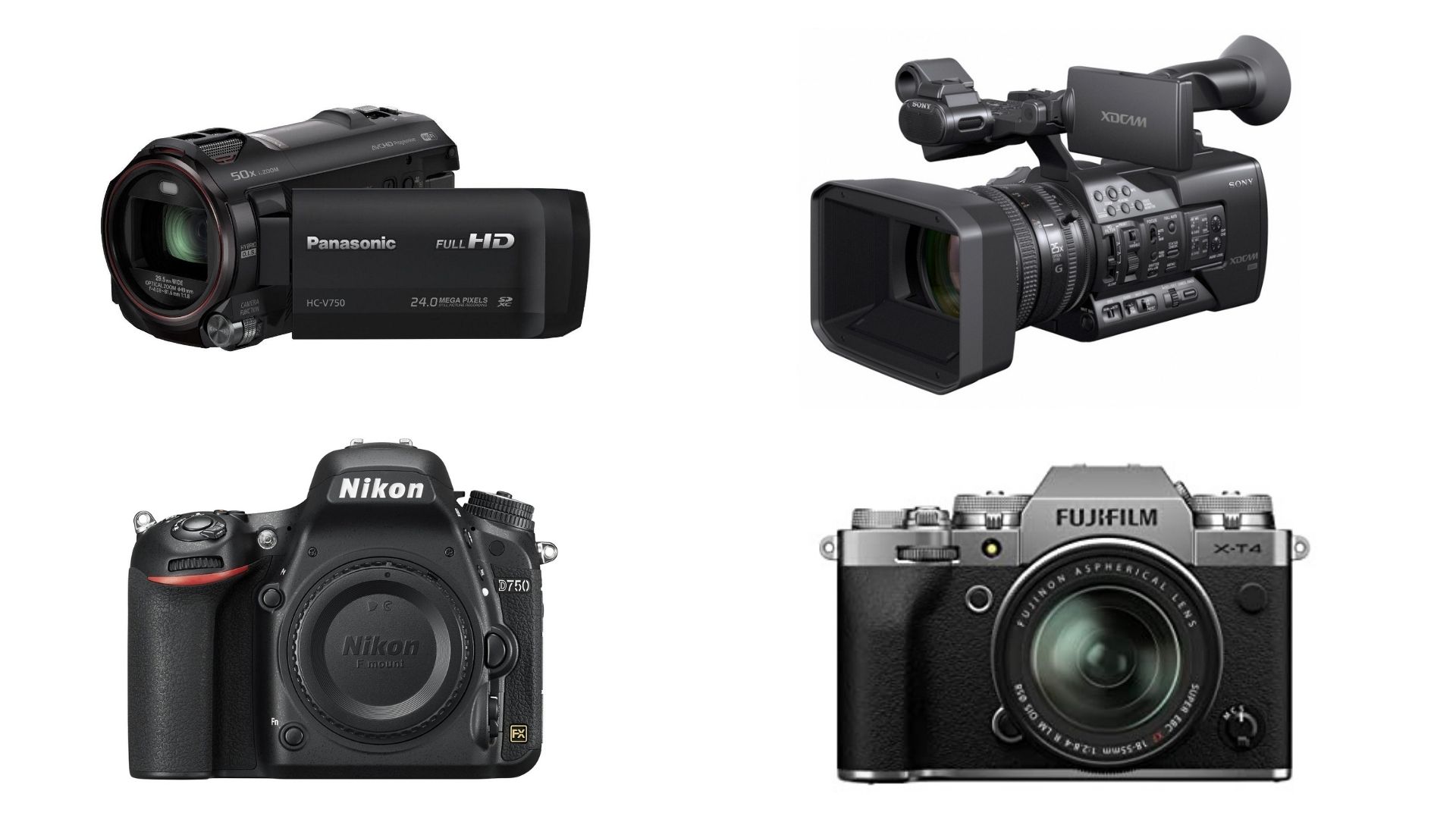Your confusion about making a decision between a professional camcorder versus DSLR versus mirrorless for videos and images is rightful. Because it is no longer clear-cut now as there are plenty of upgraded and advanced gears available in each category. To put a full stop in front of your search, here is a detailed yet concise comparison of camcorder vs DSLR vs mirrorless.
What is a camcorder?
A camcorder is a common video-recording device with a tilt-and-swivel screen and built-i long zoom lens that reaches just over the boundaries of your hand.
The earlier versions of camcorders were heavy and bulky, they were not good at recording audio as well. But now, some expensive camcorders feature professional XLR audio inputs and built-in microphones.
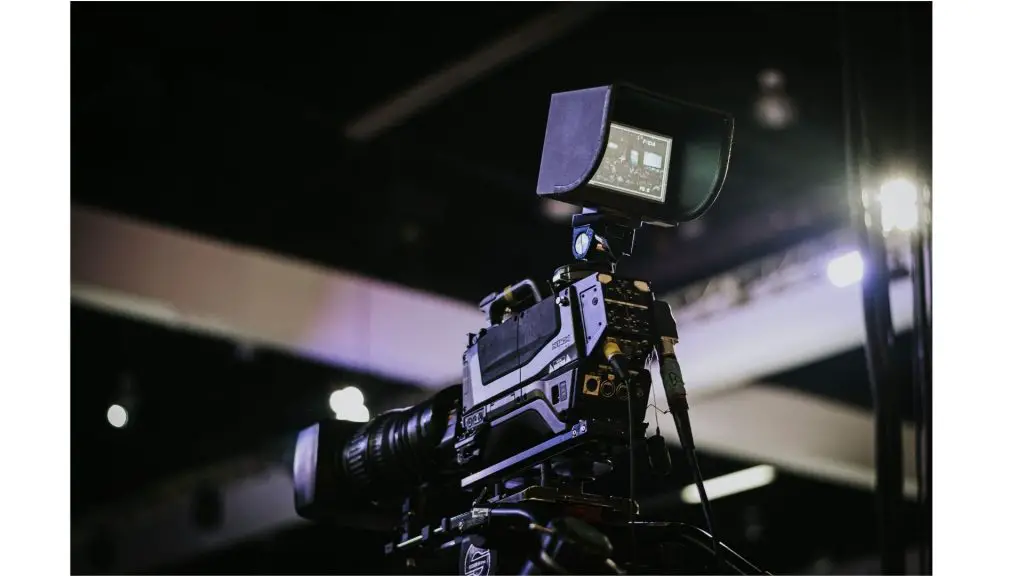
What is a DSLR Camera?
A Digital SLR camera is referred to as a DSLR. The acronym SLR stands for single-lens reflex which means that light is reflected from the lens onto a flat ground-glass screen via a reflex mirror. DSLR cameras have a system of interchangeable lenses and also a digital display.
After only a few years of technological improvements, the first DSLR camera was produced in 1999. With a vast number of options on the market, the DSLR provides a wide range of options for taking professional camera-quality photographs.
DSLR cameras are available in 2 different formats that depend on the type of sensor they have. These two formats are FX and DX.
Read Also: Nikon D7500 DSLR Camera

What is a Mirrorless Camera?
The term “mirrorless camera” refers to a compact camera system that does not have a reflex mirror. Light flows directly through the lens to the digital sensor, which then displays your image on the camera’s LCD screen. This allows you to fine-tune settings and preview your shot before taking it. A mirrorless camera features a system of interchangeable lenses.
The mirrorless camera’s primary selling feature is that it is lighter and more compact than DSLR cameras due to the lack of a mirror system.
Full-frame, APS-C, Micro Four Thirds, and 1-inch imaging sensors are available in mirrorless cameras.
Read Also: Sony FX6 mirrorless camera
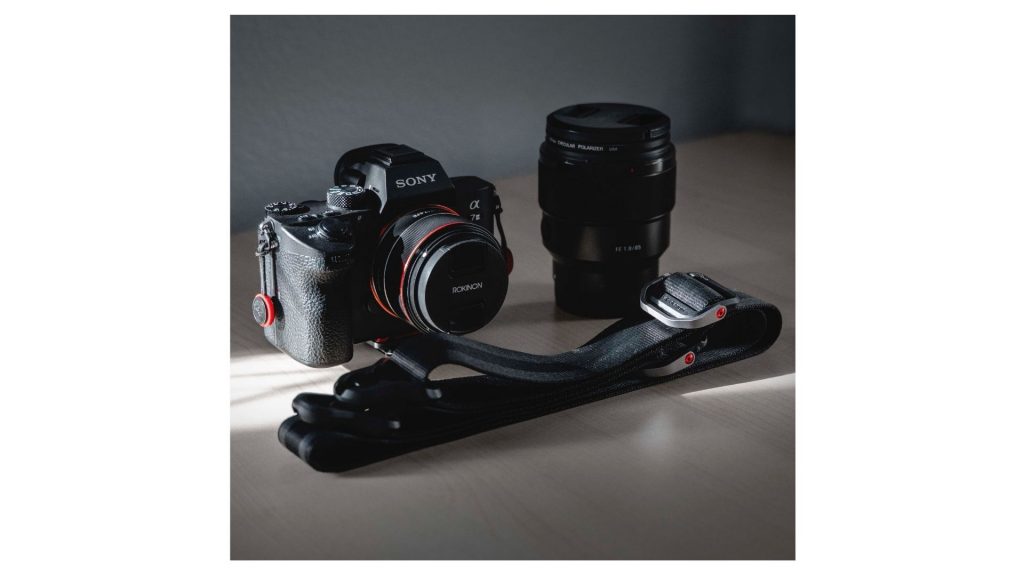
What’s the difference?
| Camcorder | DSLR | Mirrorless |
|---|---|---|
| A camcorder is mainly designed to shoot a documentary or live broadcasting videos continuously for a time longer than DSLR or mirrorless cameras. The latest camcorders now possess features similar to DSLR or mirrorless, such as long battery hours and built-in storage. But they are not good for still photography. | A DSLR ( Digital SLR ) is mainly designed and used for still shots. It uses lenses that are interchangeable according to the needs. When you take a photo, a mirror reflects the image up to the viewfinder and flips up, blacking out the eyepiece. As a result, when shooting video with it, you must use the main screen’s ‘Live View’ feature instead. | A mirrorless camera is also mainly designed and used for still shots. It is similar to an SLR in that it allows you to swap lenses, but it lacks a mirror. The image is displayed on the primary live view screen or an electronic eye-level viewfinder if one is available. They’re usually more compact and lighter than DSLR cameras. |
Both DSLR and SLR are homogenous to each other yet differ to some extent in size and specifications. Some newer cameras, such as the Sony FX3 ( SLR ) and Canon EOS C70 ( DSLR ), behave more like a cinema/hybrid. So they may work for your production, depending on budgets and format requirements. But using mirrorless for video has better results than using DSLR for video.
Let’s dive in to have a look at the top differences between professional camcorders vs DSLR vs Mirrorless for videos and images.
11 Top differences between camcorders, DSLR, and mirrorless cameras
This list mentions the top difference between the camcorder and DSLR / mirrorless cameras.
- Sensor size
- Depth of field
- Low light performance
- Recording time
- Focus
- ND Filters
- Audio
- Live broadcasting
- Ergonomics
- Size and weight
- Cost
Camcorder vs DSLR / Mirrorless: Sensor size
The major difference between DSLRs / mirrorless and camcorders, at least at the same price range, is that DSLRs have far larger sensors than camcorders.
Camcorders with larger sensors are available, but they are typically high-end versions that cost several thousand dollars, whereas a DSLR may readily be found for around a grand.
So, what’s all the fuss about sensor size? In terms of video, shooting with a bigger sensor has two major advantages: depth of field and low light.
By simply looking at the sensor, one can differentiate between a camcorder versus DSLR versus mirrorless for videos and images
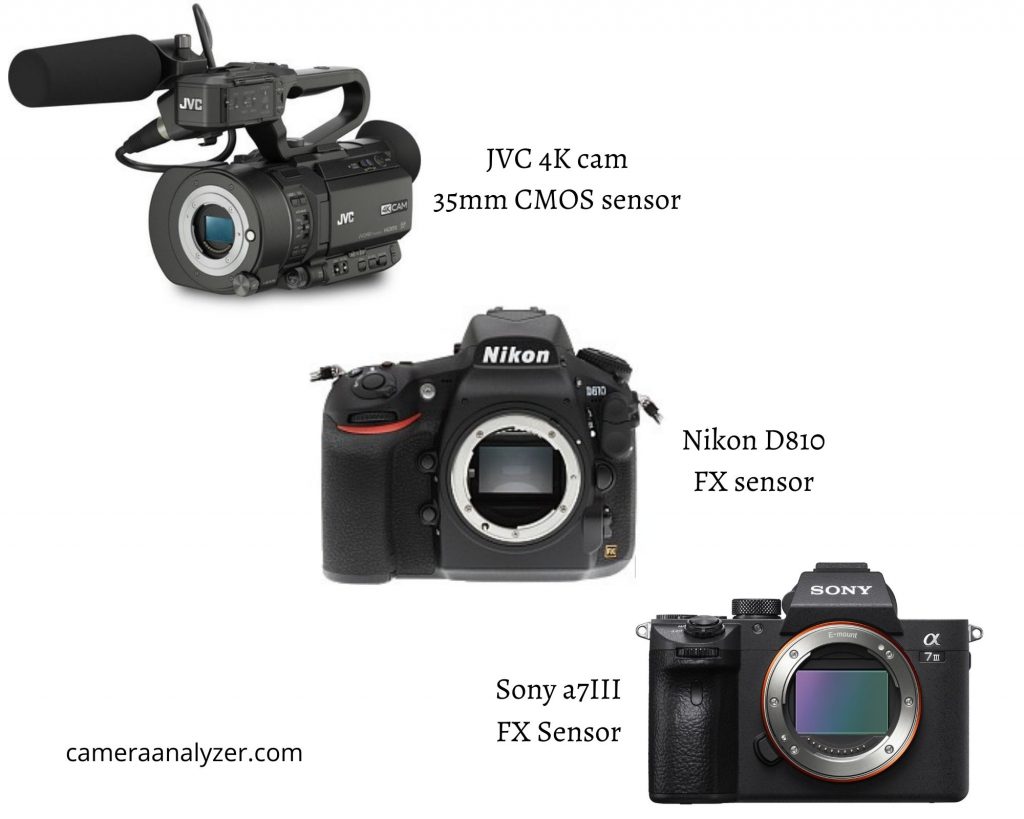
Camcorder vs DSLR / Mirrorless: Depth of field
The depth of field refers to how much of the image is in focus or how much the main object is in focus—for example, portraits with a blurred background are common. Because of the bigger sensor, creating a blurred backdrop is significantly easier with a DSLR.
For camcorders, this can only be possible with an expensive one that has larger sensors.
Is there another factor? A lens with a large aperture (f/1.8 or f/2.8, for example). The creamy bokeh and out-of-focus background are the main reasons why some videographers choose to utilize a DSLR.
Camcorder vs DSLR / Mirrorless: Low light performance
A bigger sensor catches more light than a smaller one in low-light situations. A DSLR’s bigger sensor makes it easier to capture low-light photographs without the use of a video light. When shooting at the higher ISOs required when lighting is limited, cameras with bigger sensors produce less noise.
When shooting in low or limited light at the higher ISOs, cameras with bigger sensors tend to produce less noise.
DSLR vs camcorder for video or photos in low light makes a positive edge for DSLR.
Camcorder vs DSLR / Mirrorless: Recording time
A camera’s processor can only handle a certain amount of data at any given time. The recording will come to an end when the camera can no longer process any more data.
Camcorders win this one since they’re meant for video and can record for over an hour at a time, and often until the battery runs out.
DSLRs typically have a half-hour maximum recording time, but not continuously, rather in short periods. These periods are usually significantly shorter for the 4K video, although every model differs slightly, so keep that in mind while looking at the tech details.
Because most professional videographers combine multiple recordings to generate their final video, shorter recording periods aren’t as big of a concern. A camcorder, on the other hand, is likely to be your better option if you want to film a whole sports game from start to end.
This is an important aspect to count for mirrorless / DSLR video vs camcorder video.
Camcorder vs DSLR / Mirrorless: Focus
When comparing camcorders versus DSLR versus mirrorless, the focus becomes a major factor, however, recent technological developments have substantially narrowed the gap.
The old versions of DSLRs didn’t even have autofocus, but new cameras have decent autofocus for video filming. Meanwhile, the latest cameras that are being released are good in focus as well.
Professional videographers almost always employ manual focus, regardless of the equipment they are using. Why? You can pick when and how quickly to focus, as well as use different effects like switching the emphasis between two persons based on who is speaking if you have complete control over the focus.
When it comes to doing videography with a camcorder or DSLR / mirrorless, the focus is the primary factor to be considered in camcorder versus DSLR versus mirrorless for videos and images.
Do camcorders have auto or manual focus?
Yes, There are two types of focus on camcorders: manual and automatic. The major topic of an image will appear crystal clear to the viewer when it is in focus. When the camera is set to manual, you’ll need to use the focus ring to get the best results. A button, switch, or menu setting is commonly used to activate autofocus.
Do DSLR / mirrorless cameras have auto or manual focus?
Yes, DSLR cameras offer full auto and manual control to the user. The type of focusing used in Live View mode is the most important attribute to look for in a DSLR (which is how most record video). For video, phase detection methods perform well.
Professional videographers almost always employ manual focus, regardless of the equipment they are using. Why? You can pick when and how quickly to focus, as well as use different effects like switching the emphasis between two persons based on who is speaking if you have complete control over the focus. With a DSLR, manual focus is possible.
Read Also: Rangefinder vs DSLR
Camcorder vs DSLR / Mirrorless: ND Filters
Camcorders contain built-in neutral density filters that allow video to be correctly exposed on a bright day while maintaining the proper shutter speed.
As DSLRs don’t have this capability built-in, you might face issues with extremely bright videos. Therefore, you’ll need to get an ND filter.
To avoid choppy footage when recording video, the shutter speed is adjusted to the frame rate. For example, if you’re shooting at 60 frames per second, the shutter speed will be 1/60, and if you’re shooting at 24 frames per second, the shutter speed will be 1/30. Those shutter rates are actually quite slow, making photographing in direct sunshine difficult.
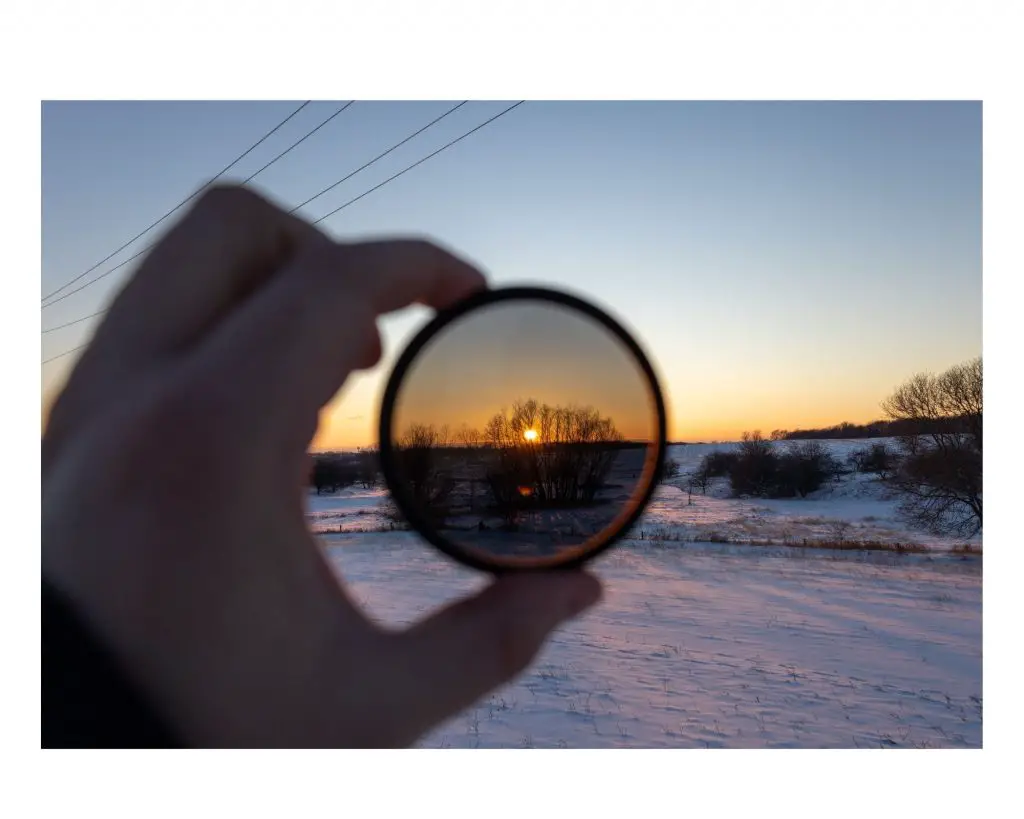
Camcorder vs DSLR / Mirrorless: Audio
Audio is a key consideration that many beginner filmmakers overlook. In general, a mic built inside a camcorder is superior to those found in DSLRs.
But here’s the thing: whether you’re shooting with a camcorder or a DSLR, an inexpensive mic placed closer to the subject will function better than any built-in mic.
As a result, when experienced videographers choose, they tend to shoot using DSLRs, the audio factor isn’t a major concern because they’ll be adding audio gear anyhow. To be sure, check the model’s technical specifications, however, most DSLRs will offer a stereo microphone input connection.
You may use a shotgun mic or even a DSLR audio recorder to record numerous mics with this setup.
Camcorder vs DSLR / Mirrorless: Live broadcasting
This is a unique feature that only camcorders possess. Due to this reason, many live streaming channels/platforms use camcorders.
DSLR or mirrorless cameras do not feature the function of live broadcasting. Even there exists no instrument or equipment that can make a DSLR or mirrorless broadcast live.
This one feature makes the camcorder most demanding in camcorder versus DSLR versus mirrorless for videos and images.
Camcorder vs DSLR / Mirrorless: Ergonomics
DSLR cameras are built to take a picture, then move around and take another. Camcorders, on the other hand, are intended to be used for extended periods of time.
When filming for several minutes, the way a DSLR is held can get quite tiresome, whereas holding a camcorder for a longer amount of time is more pleasant. A camcorder is handy and it has a grip on top to get a hold of it, meanwhile, DSLR or mirrorless cameras don’t have a grip.
Of course, if you’re going to utilize a tripod to keep the film steady in the first place, ergonomics aren’t an issue.
Professional camcorder vs DSLR vs mirrorless for this factor is on the side of camcorders.
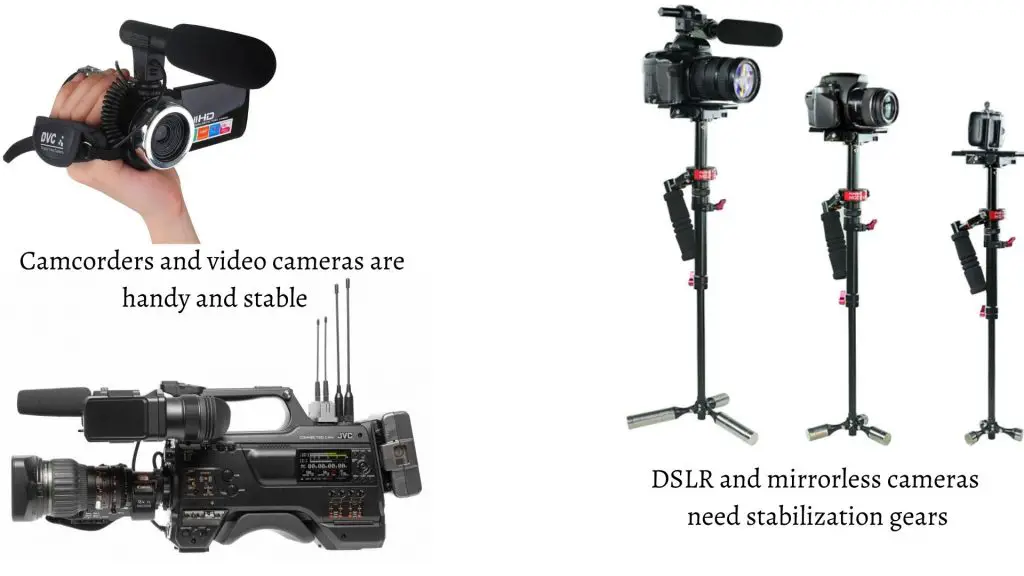
Camcorder vs DSLR / Mirrorless: Size and Weight
This is the very first thing that comes to mind is the comparison of camcorder versus DSLR versus mirrorless. This matters a lot in content creation, particularly in videography.
Camcorders are larger in size but not too heavy. The size and weight vary from one model to another.
DSLR cameras are comparatively smaller than camcorders but larger in size than mirrorless. DSLR camera weighs more than a camcorder and mirrorless camera.
Mirrorless cameras are smaller in size and less in weight in comparison to camcorders and DSLR cameras.
So, Mirrorless / DSLR vs video camera in terms of size and weight goes in favor of mirrorless.
Camcorder vs DSLR / Mirrorless: Cost
While a consumer camcorder may be had for a few hundred dollars, a dedicated camcorder with larger sensors and advanced functions cannot be had for the same price as a DSLR.
DSLRs are substantially less expensive than professional camcorders.
Because of the reduced price, it’s also much easier to pick up multiple DSLRs and film from various angles, which may be a major help in a lot of situations. With a DSLR, you’ll likely need a few more accessories than you would with a camcorder, such as a neutral density filter set and a manual focus assist setup. However, audio equipment and other attachments such as tripods and video lights work well with both DSLRs and camcorders.
Read Also: Cinema Camera vs DSLR vs Mirrorless
Advantages and disadvantages of using a DSLR / mirrorless camera for videos or images
The advantages and disadvantages of a DSLR / mirrorless are described here.
Advantages of DSLR / mirrorless for videos and images
These are the advantages of using a DSLR / mirrorless camera for videos or images.
- Small size
- Portable
- Cinema Quality sensors
- Interchangeable lenses
- High-quality video in low light
- Superior quality still photography
- Shutter control
- Lower cost
These cameras are small in size and portable. Small cameras are handy and can be carried out anywhere for the family trip, vlogging, and wedding videography. Exceptional bags in different styles are available in the market to carry these cameras along with the luggage.
Built-in cinema Quality Sensors offer a noteworthy result of the object you are trying to shoot. The main object comes out in saturated and pure colors with a sharp focus that brings attention only to the main object.
You can mount tens of interchangeable lenses on the body of the camera. This is the most admirable and unique feature that makes these cameras preside over camcorders. Conditions vary accordingly to the scene that you can overcome with a suitable lens.
Read Also: Can I use Nikon lenses on Canon camera?
These cameras undoubtedly present you with high-quality video in low light. You can use a camera with a suitable lens according to the conditions. Then you can expect the rest of the work by its manual function where you can adjust the camera setting by yourself.
All cameras feature a Still image option. The photos captured with these cameras have a depth of field. This particular feature makes the main object distinguished and clear from the background and doesn’t mix with it. Thus, an eye-catching photo comes in as the result.
Manual mode makes you access the shutter control. In addition to this, you can also change the ISO, and FPS if the option is available. Manual mode allows you to stretch out a better result on too dark or bright shiny days.
DSLR and SLR cameras have a lower cost. A bare minimum of 250$ would be enough to get your hands on a DSLR. Furthermore, there is a wide range available in this budget. You can get some good shots once you master the camera.
Disadvantages of using a DSLR / mirrorless for videos and images
These are the disadvantages of using a DSLR / mirrorless camera for videos or images.
- No built-in storage
- Shorter recording times
- No built-in ND filters
- Lack headphone jack
- Extra cost on zooming lenses
- Delayed focus
- Stability
- Overheating
These cameras have no built-in storage drive and store data only on inserted SD cards. Shooting in higher pixels takes much storage and thus these cameras have shorter recording times.
DSLR or mirrorless possesses no built-in ND filter. These filters need to be changed and adjusted constantly according to the requirement of the scene. Furthermore, an ND filter needs to be purchased which is an extra expense.
Many DSLR and mirrorless cameras lack headphone jacks. But even with a separate microphone, a few can’t record acceptable audio. As a result, you might need to utilize a different audio recorder.
These cameras can have extra costs on zooming lens if you need to work from a distance. Because only kit lenses are offered with the new cameras. So, you might need to get zoom lenses.
Read Also: Difference between FX lenses and DX lenses
On a live view screen, determining focus can take a long time. You may need to use a second viewfinder or ‘loupe’ to magnify the image.
Shallow depth of field might be a nuisance rather than an advantage when trying to keep the focus on moving items. Stills autofocus on SLRs is normally excellent and quick, but ‘live view’ autofocus – with the mirror up – can be substantially slower.
For video shoots, these cameras might be difficult to keep steady and move smoothly. A tripod, a gimbal, a stabilizer, or a crane may be required. The majority of camcorders have good picture stabilization, making them easier to operate handheld.
Continuous recording of videos might cause a potential overheating in the DSLR and SLR cameras. This is a rare sight yet noticeable and often discussed.
Who should use DSLR or Mirrorless?
You must choose a DSLR or mirrorless ( SLR ) if you want to do cinematography or short videos. For a beginner level, a DSLR for videos is ideal. But a little higher budget and skill deserve an SLR for videos
If you want to attain that film-like image quality, you should use DSLRs or mirrorless cameras. As a result, I recommend these cameras to film students and filmmakers with a penny-pinching budget. They’re also the ones to acquire if you want to shoot both stills and video in excellent quality.
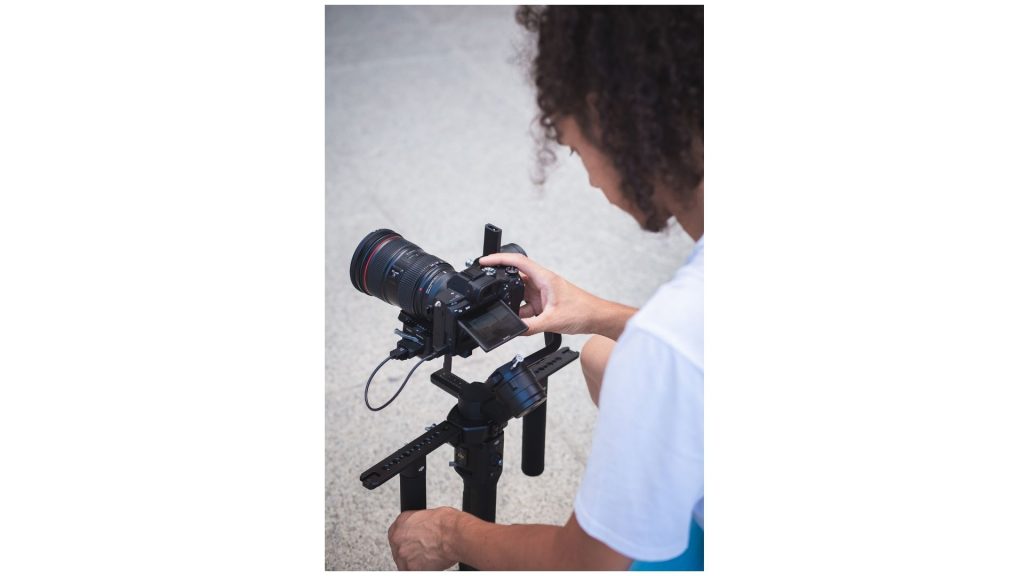
Who should not use DSLR or Mirrorless?
Professionals who want to get a camera for live streaming on the website or any other platform should not get a DSLR or SLR camera.
Filmmakers in the profession of documentaries should avoid these cameras because these cameras cannot record for a longer period of time.
For the scenes and events where objects are moving and different focal length is required due to the distance. This ultimately means that a zooming lens is needed that is just an extra burden.
Advantages and disadvantages of using a camcorder for videos or images
These are the advantages and disadvantages of a camcorder for videos and images.
Advantages of using a camcorder for videos and images
The following are the advantages of using a camcorder for videos or images.
- Long recording sessions
- Broadcasting video inputs
- Wireless and LAN streaming
- Lighter in weight
- XLR inputs
- Built-in ND filters
- Servo zoom lenses
- High-capacity battery
- Large display screens
- Default EVFs
A built-in hard drive plays a vital role in long recording sessions. Camcorders with dual card slots that continue recording across cards and high-capacity card support are available as well.
Broadcasting video outputs such as SDI is the biggest advantage of camcorders. So these cameras can be utilized for monitoring and streaming options that are not available to DSLR and mirrorless camera operators.
Many camcorders now have built-in wireless and LAN streaming capabilities, in addition to the wireless control found in many mirrorless/DSLR cameras. With some cameras, you can broadcast directly from your camera to online sites, giving you a complete Livestream studio in one package. One example of an all-in-one 4K live streaming camera is the JVC GY-HC550.
Camcorders can be lighter in weight despite being larger than DSLR/Mirrorless cameras. They are built for ENG with their shape and shoulder-mounted form factor. So, an additional shoulder mount or cage system is not required primarily.
Most professional camcorders include XLR inputs, allowing you to use professional mics out of the box. They often provide XLR phantom power for condenser microphones. Furthermore, they also provide the ability to input signals from an audio board in event settings.
Most ENG-style camcorders have built-in ND filters. This assists the camera to adapt and adjust changes quickly according to different light conditions at different locations.
When switching between scenes rapidly, servo zoom lenses are advantageous. As they’re also simple to relocate your camera’s control grip onto a shoulder rig.
For long-duration shootings, camcorders frequently come with high-capacity battery options by default. They can also accommodate extra high-capacity alternatives, as well as more AC, hot-swap, and failover options.
When needed, larger & built-in LCDs and comfortable default EVFs offer no trouble to monitor your shots without external monitors. External monitors can be simply mounted, and some have high-resolution outputs like SDI or HDMI for extra monitoring possibilities.
Disadvantages of using a camcorder for videos and images
These are the disadvantages of using a camcorder for videos or images.
- Limited creative control
- Small sensors
- Not good depth of field
- Fixed lenses
- Limited audio control
- No wide-angle or telephoto options
- Limited FPs
Camcorders have limited creative control. It means you can not adjust the setting of the camera according to the demand of the scene.
Another big disadvantage is small sensors. Sensors receive incoming light and are responsible for a better quality video. Thus small sensors mean that in low light, the outcome cannot be fine. Furthermore, camcorders do not have a great depth of field due to these small sensors.
All camcorders (except Sony NEX VG20) have fixed lenses. You cannot change the lenses in whatever condition you are. You just have to go with whatever you have.
Some of the models have limited audio control. In addition to this, camcorders do possess not compressed audio.
Most models of the camcorders lack proper wide-angle and telephoto options. That’s one of the drawbacks that can make you consider not buying a camcorder.
The camcorders have a limited FPS ( Frame Per Second ) rate. UNlike DSLR or mirrorless, camcorders cannot go for different FPS in the same model. Limited recording modes are yet another downside of camcorders.
Who should use a camcorder?
The professionals in media where they need to live broadcast or record continuously for a long time in the events should consider the camcorders without any second thought. If you are the one who films documentaries or long-lasting events, camcorders fit according to your needs.
In circumstances where the objects are moving rapidly, such as sports events or animals show, camcorders can present a better upshot. Because these camera lenses are easy to zoom in.
Who should not use a camcorder?
Filmmakers should not use a camcorder due to the lack of depth of field feature and appreciatable performance in low light. Camcorders fail to present better footage of objects in low light.
Conclusion
DSLR and mirrorless cameras are good for photography of any category, still videography, cinematography, short videos, true colors of footage, and bringing obvious objects into the frame.
Camcorders are only superior for the battery timings, live broadcasting, longer recording sessions, and built-in ND filter fill. Those who have any of these or all of these requirements must go for the camcorder.
In professional camcorder versus DSLR versus mirrorless for videos and images, camcorders are good for videos where live broadcasting, media shows, and documentaries are the main goals. DSLR and mirrorless are superior for cinematography and full photography.
FAQs
Are camcorders good for still photography?
No, camcorders are not good for still photography. This is due to the reason that they usually have small sensors except for highly expensive camcorders. So, depth of field and image performance are not good in camcorders.
Is camcorder better for vlogging or DSLR or mirrorless?
Camcorders should not be considered for vlogging, because they are larger in size and they do not have a system of interchangeable lenses. DSLR or mirrorless are suitable for vlogging as you can take cinematic shots with them and also you can mount any lens of the need.
What is the difference between the camcorder and video camera?
Flash memory cards are used to record video from video cameras. While camcorders can record to memory cards, they also include inbuilt hard drives that store footage.
